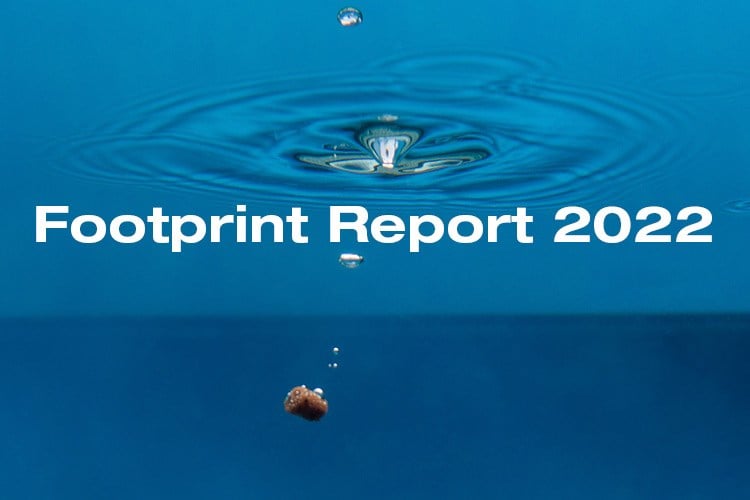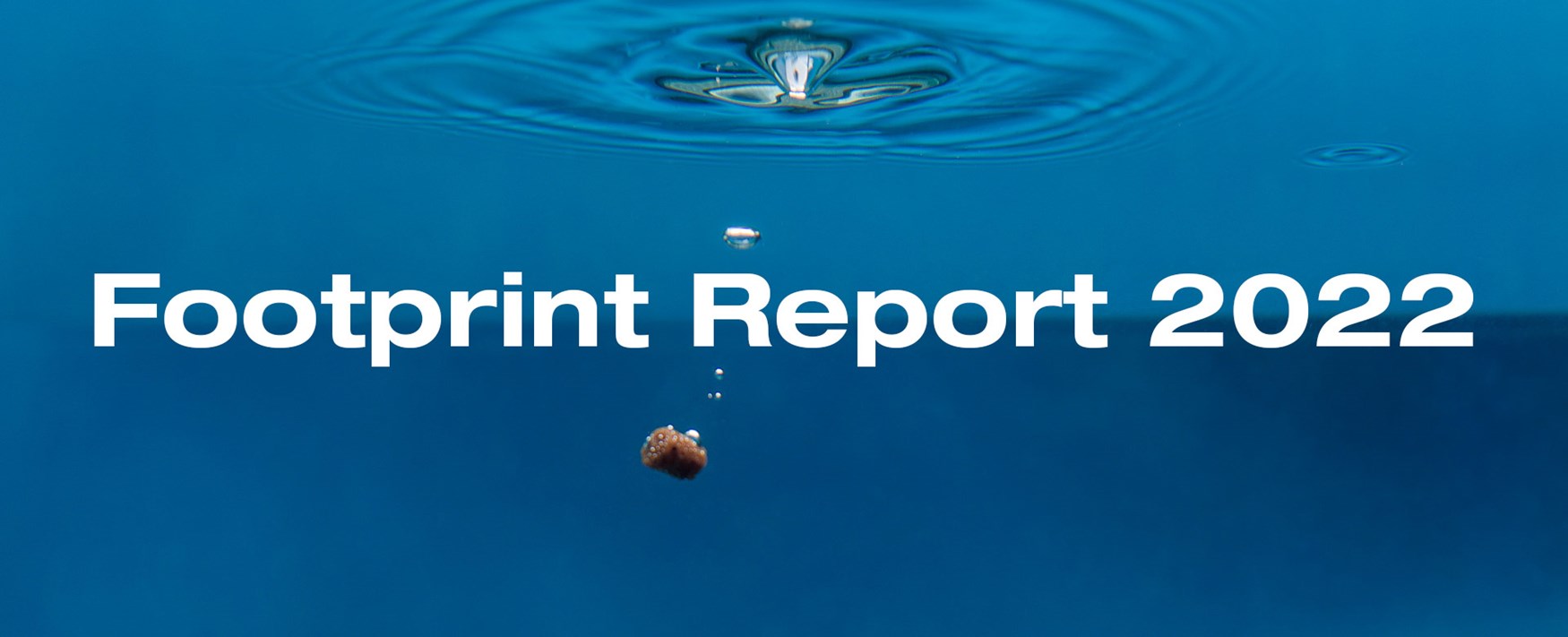Carbon footprint is an estimate of the greenhouse emissions and climate change impact of activity – for example producing one kilogram of aquaculture feed. Typically, a carbon footprint is calculated by estimating not just the CO2 emissions that the activity in question causes, but also factors in emissions of other greenhouse gases (such as methane and nitrous oxide) and in some cases other types of climate impacts as well, for example the effect of deforestation. For simplicity, all these impacts are added together and expressed as a single number in terms of carbon dioxide equivalent (CO2eq): the amount of CO2 that would create the same amount of warming.
The true carbon footprint of one kilogram of feed includes not only the direct GHG emissions resulting from the manufacturing process and the transportation of the feed to the farm. It also includes a whole host of indirect GHG emissions, such as those caused by growing the crops used in the feed, processing of feed ingredients, mining activities, production of vitamins, transport of the raw materials and so on. These are just a few of the processes involved. Transport of feed ingredients from the market to Norway is for instance less than 4% of the feed carbon footprint at the point where it is delivered to the fish farmer.
We use the PEFCR standard
The European Union's Product Environmental Footprint Category Rules (PEFCR) requires carbon footprint to be reported with the economic allocation method including land use change (LUC). So that is our primary calculation method. We also use market-based calculation for electricity as Norwegian authorities demands from Norwegian power suppliers.
Click here to go back to the main page for emissions based on PEFCR, including LUC and with market-based calculation for electricity.
Explanation of Carbon footprint (CO2eq) calculations (method)
Calculations are done based on calculation principles outlined in PEFCR feed for food producing animals (2018), aligned with ISO 14040/44:2006
- preferred database: GFLI; other quality-assured and accepted LCA databases were used if no ingredient specific dataset is available in GFLI
- coverage: full bill of ingredients included, i.e. also trace elements and vitamins, in alignment with PEFCR feed standard
- rework ingredients were assigned with average carbon footprint values of formulations across those latest formulations excl. rework
- where no countries of origins are available, the global average dataset is selected; if no global average dataset is available the European average is taken, if this is also not available, a country-specific dataset is selected
- inbound logistics for feed ingredients were calculated with estimated transport distances and intra-continentaland intercontinental global default data for international transport as given by the PEFCR Guide. For 2018 and 2019 we have used the same dataset as for 2020.
New method to calculate GHG emissions for Norwegian produced electricity increased the footprint from our own manufacturing process
In 2020 Norwegian authorities demanded that Norwegian power suppliers moved from location based to a market-based CO2eq calculation with background in EU's Renewable Energy Directive. This is in compliance with the science-based target initiative (SBTI) which Skretting has committed to through our mother company Nutreco. For our standard calculations we use the market-based calculation for electricity for every year, also for the years prior to this new demand. Compared to historic printed reports, the number for 2018-2020 has increased due to this new calculation method. E.g. The location-based calculation had 10.7 g/CO2eq for 1 KWh (IEA 2021), while the market-based calculation uses 405 g/CO2eq for 1 KWh (NVE 2021).
Carbon footprint of Skretting Norway's fish feed calculated with the PEFCR standard: Economic allocation, LUC included and market-based calculations for electricity
Carbon footprint (CO2eq) per kg feed economic allocated with LUC, market-based (PEFCR standard)
|
2022 |
2021 |
2020 |
2019 |
2018 |
| Scope 1 (manufacturing process, direct GHG) |
0,02 |
0,02 |
0,02 |
0,02 |
0,03 |
| Scope 2 (manufacturing process, indirect GHG)* |
0,04 |
0,04 |
0,04 |
0,04 |
0,05 |
| Scope 3 (value chain, indirect GHG)* |
1,71 |
2,33 |
2,58 |
2,76 |
3,19 |
| Total per 1 kg feed— GHG footprint at factory gate |
1,77 |
2,39 |
2,64 |
2,82 |
3,27 |
Carbon footprint (CO2eq) absolute tonne emissions, economic allocated with LUC, market-based (PEFCR standard)
|
2022 |
2021 |
2020 |
2019 |
2018 |
| Scope 1 (manufacturing process, direct GHG) |
13.082 |
13.211 |
14.203 |
13.843 |
14.906 |
| Scope 2 (manufacturing process, indirect GHG)* |
23.636 |
23.960 |
24.098 |
22.111 |
30.313 |
| Scope 3 (value chain, indirect GHG)* |
1.006.425 |
1.369.536 |
1.542.762 |
1.534.611 |
1.803.468 |
Total absolute — GHG footprint at factory gate
|
1.043.143 |
1.406.707 |
1.581.063 |
1.570.565 |
1.848.687 |
Breakdown of Scope 3 (CO2eq) absolute tonne emissions, economic allocated with LUC, market-based (PEFCR standard)
|
2022 |
2021 |
2020 |
2019 |
2018 |
| Raw materials |
961.069 |
1.316.349 |
1.482.675 |
1.478.803 |
1.747.011 |
| Inbound logistics |
40.815 |
52.919 |
59.839 |
55.696 |
56.458 |
| Packaging |
4.147 |
- |
- |
- |
- |
| Air travel employees |
228 |
84 |
91 |
- |
- |
| Fossil car travel employees |
154 |
177 |
157 |
111 |
- |
| Electric car travel employees*** |
12 |
8 |
0 |
1 |
- |
Total Scope 3 — GHG footprint at factory gate
|
1.006.425 |
1.369.536 |
1.542.762 |
1.534.611 |
1.803.468 |
| Outbound logistics***** |
23.706 |
22.160 |
22.883 |
19.828 |
- |
Total Scope 3 — GHG footprint including outbound logistics
|
1.030.131 |
1.391.696 |
1.565.645 |
1.554.439 |
- |
Data with different calculation methods
Below are Skretting Norway's GHG emissions with different calculation methods.
Economic allocation, without LUC and market-based calculations for electricity
Carbon footprint (CO2eq) per kg feed economic allocated without LUC, market-based
|
2022 |
2021 |
2020 |
2019 |
2018 |
| Scope 1 (manufacturing process, direct GHG) |
0,02 |
0,02 |
0,02 |
0,02 |
0,03 |
| Scope 2 (manufacturing process, indirect GHG)* |
0,04 |
0,04 |
0,04 |
0,04 |
0,05 |
| Scope 3 (value chain, indirect GHG)* |
1,36 |
1,56 |
1,65 |
1,66 |
1,66 |
| Total feed— GHG footprint at factory gate |
1,43 |
1,62 |
1,71 |
1,72 |
1,74 |
Carbon footprint (CO2eq) absolute tonne emissions, economic allocated without LUC, market-based
|
2022 |
2021 |
2020 |
2019 |
2018 |
| Scope 1 (manufacturing process, direct GHG) |
13.082 |
13.211 |
14.203 |
13.843 |
14.906 |
| Scope 2 (manufacturing process, indirect GHG)* |
23.636 |
23.960 |
24.098 |
22.111 |
30.313 |
| Scope 3 (value chain, indirect GHG)* |
802.640 |
916.508 |
965.969 |
972.783 |
972.770 |
| Total absolute — GHG footprint at factory gate |
839.359 |
953.679 |
1.004.270 |
1.008.737 |
1.017.989 |
Breakdown of Scope 3 (CO2eq) absolute tonne emissions, economic allocated without LUC, market-based
|
2022 |
2021 |
2020 |
2019 |
2018 |
| Raw materials |
757.285 |
863.320 |
905.882 |
916.976 |
916.313 |
| Inbound logistics |
40.815 |
52.919 |
59.839 |
55.696 |
56.458 |
| Packaging |
4.147 |
- |
- |
- |
- |
| Air travel employees |
228 |
84 |
91 |
- |
- |
| Fossil car travel employees |
154 |
177 |
157 |
111 |
- |
| Electric car travel employees*** |
11,9 |
8,2 |
0,1 |
0,5 |
- |
| Total Scope 3 — GHG footprint at factory gate |
802.640 |
916.508 |
965.969 |
972.783 |
972.770 |
| Outbound logistics***** |
23.706 |
22.160 |
22.883 |
19.828 |
- |
| Total Scope 3 — GHG footprint including outbound logistics |
826.347 |
938.668 |
988.853 |
992.611 |
- |
Economic allocation, with LUC and location-based calculations for electricity
Carbon footprint (CO2eq) per kg feed economic allocated with LUC, location-based
|
2022 |
2021 |
2020 |
2019 |
2018 |
| Scope 1 (manufacturing process, direct GHG) |
0,02 |
0,02 |
0,02 |
0,02 |
0,03 |
| Scope 2 (manufacturing process, indirect GHG)** |
0,001 |
0,003 |
0,003 |
0,003 |
0,003 |
| Scope 3 (value chain, indirect GHG)** |
1,71 |
2,33 |
2,58 |
2,76 |
3,19 |
| Total feed— GHG footprint at factory gate |
1,73 |
2,35 |
2,60 |
2,78 |
3,22 |
Carbon footprint (CO2eq) absolute tonne emissions, economic allocated with LUC, location-based
|
2022 |
2021 |
2020 |
2019 |
2018 |
| Scope 1 (manufacturing process, direct GHG) |
13.082 |
13.211 |
14.203 |
13.843 |
14.906 |
| Scope 2 (manufacturing process, indirect GHG)** |
13.670 |
13.818 |
14.791 |
14.758 |
15.839 |
| Scope 3 (value chain, indirect GHG)** |
1.006.419 |
1.369.532 |
1.542.762 |
1.534.611 |
1.803.468 |
| Total absolute — GHG footprint at factory gate |
1.033.171 |
1.396.561 |
1.571.756 |
1.563.211 |
1.834.213 |
Breakdown of Scope 3 (CO2eq) absolute tonne emissions, economic allocated with LUC, location-based
|
2022 |
2021 |
2020 |
2019 |
2018 |
| Raw materials |
961.069 |
1.316.349 |
1.482.675 |
1.478.803 |
1.747.011 |
| Inbound logistics |
40.815 |
52.919 |
59.839 |
55.696 |
56.458 |
| Packaging |
4.147 |
- |
- |
- |
- |
| Air travel employees |
228 |
84 |
91 |
- |
- |
| Fossil car travel employees |
154 |
177 |
157 |
111 |
|
| Electric car travel employees**** |
6,2 |
4,3 |
0,1 |
0,3 |
- |
| Total Scope 3 — GHG footprint at factory gate |
1.006.419 |
1.369.532 |
1.542.762 |
1.534.611 |
1.803.468 |
| Outbound logistics***** |
23.706 |
22.160 |
22.883 |
19.828 |
- |
| Total Scope 3 — GHG footprint including outbound logistics |
1.030.125 |
1.391.693 |
1.565.645 |
1.554.438 |
- |
* A market-based calculation for electricity is used for every year.
** A Location-based calculation for electricity is used for every year.
*** Including fuel, vehicle production, maintenance and road emissions for fossil and electric cars with market-based calculations for electricity
**** Including fuel, vehicle production, maintenance and road emissions for fossil and electric cars with location-based calculations for electricity
***** Outbond logistics only covers delivery by boat.
Disclaimer
The provided carbon footprint data are based on internal calculations following the core guiding principles of the standard PEFCR Feed for Food Producing Animals (2018), but are not based on fully compliant PEFCR studies. Although Skretting has taken care to ensure that the information contained herein is as accurate as possible and up to date, Skretting does not warrant the accuracy, reliability or completeness of the information. The values have not been externally verified. The information provided is for informational purposes only and is intended for internal business use only. The reader is solely responsible for any interpretation or use of the material contained herein. The footprint data are subject to change (e.g. due to ongoing database development or better supply chain information). Furthermore, cradle-to-gate footprint values are not allowed to be used for comparison or comparative assertions among each other or with other feed footprint data in accordance with international LCA standards. Animal feed is an intermediate product in the food production chain and the footprint attached to it only reflects part of the life cycle. Without considering feed performance/ functionality and downstream impacts, comparison is neither allowed nor meaningful.

